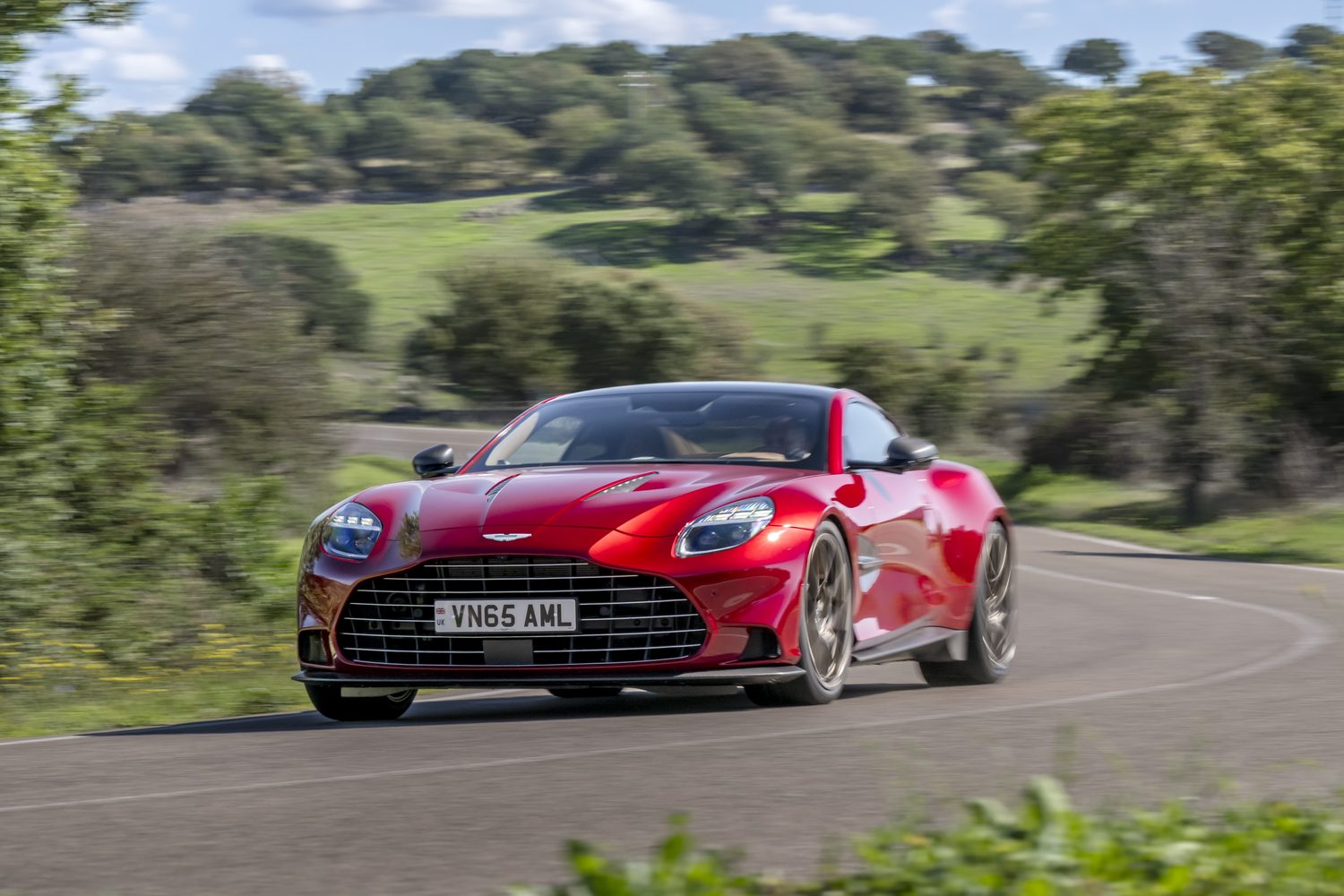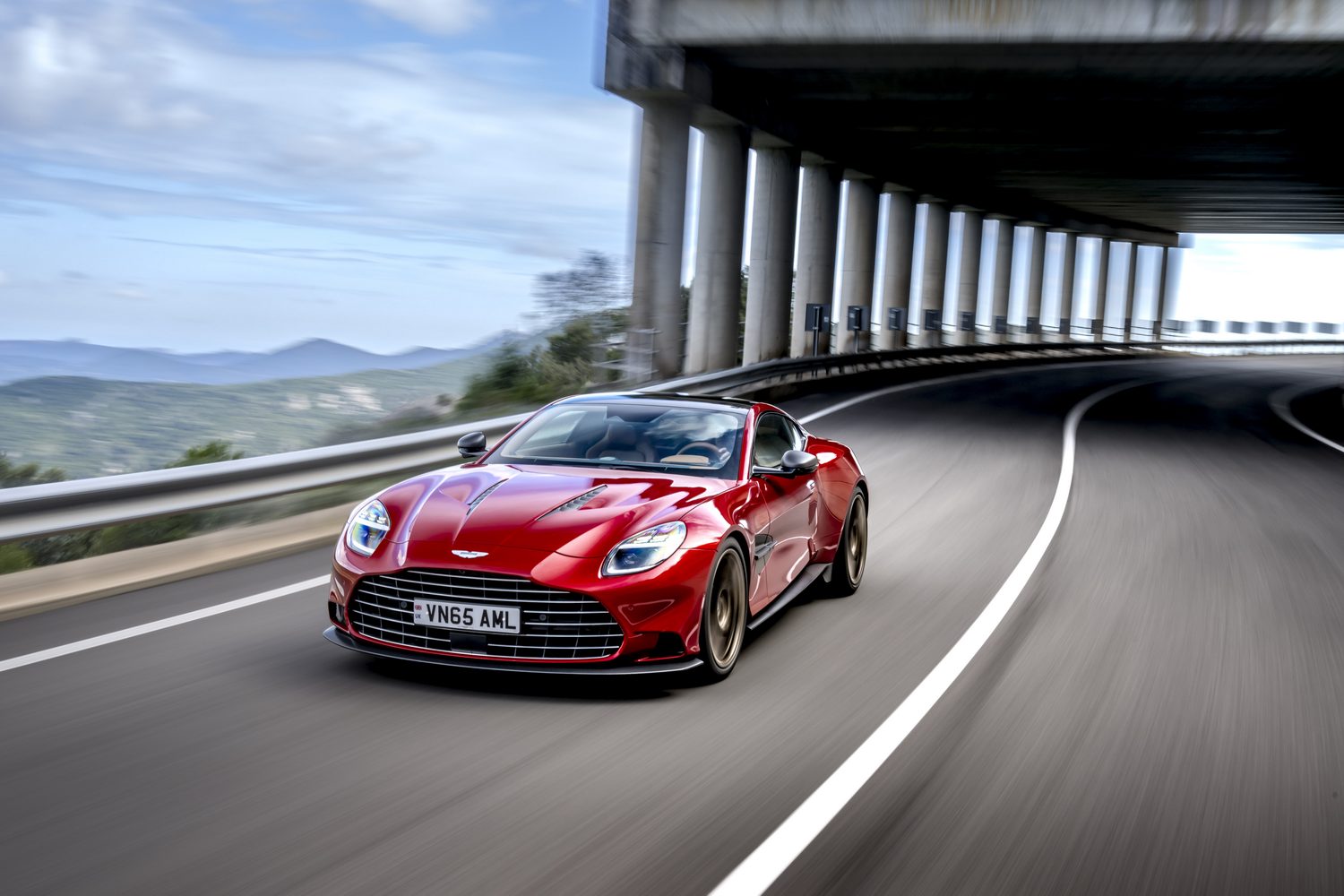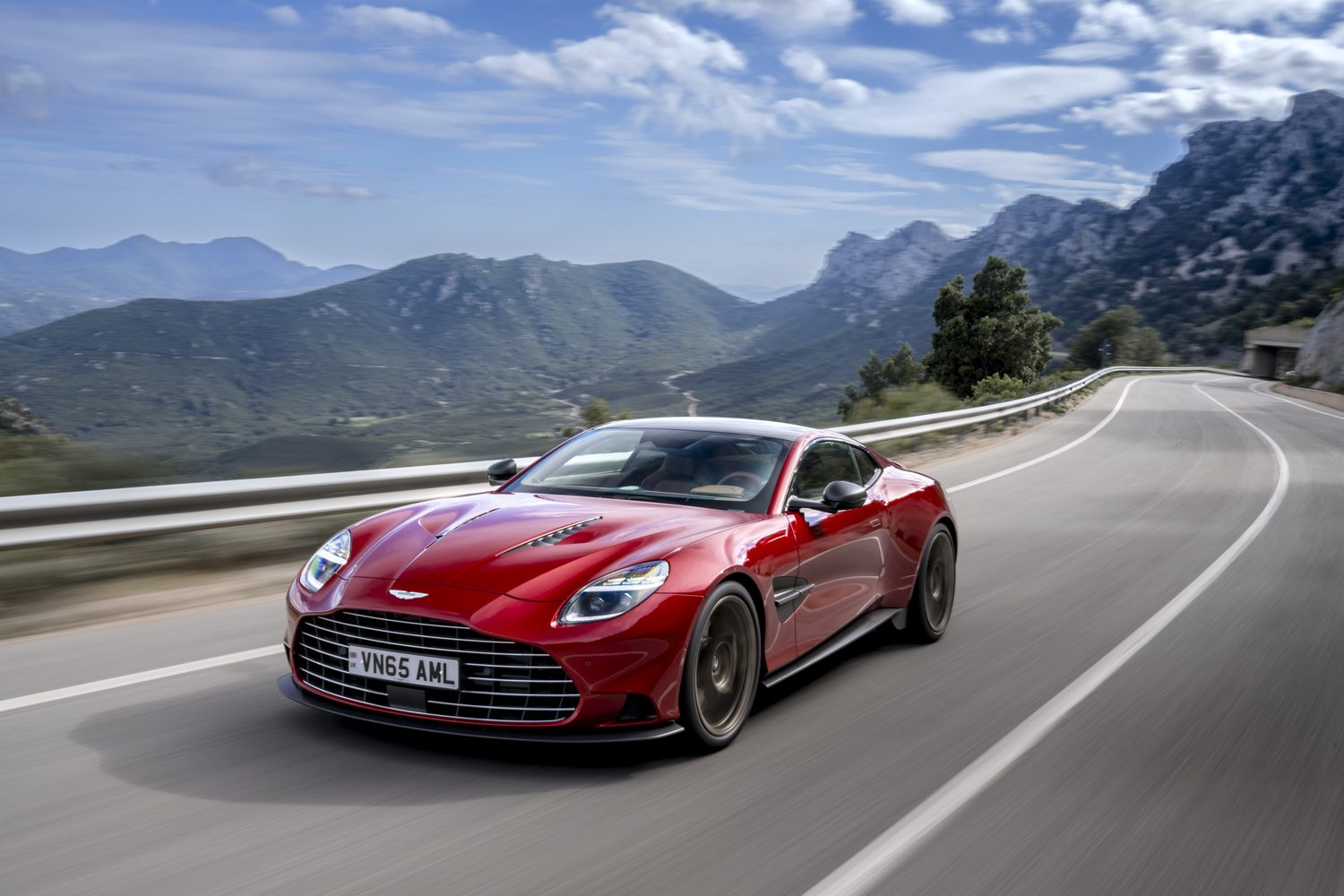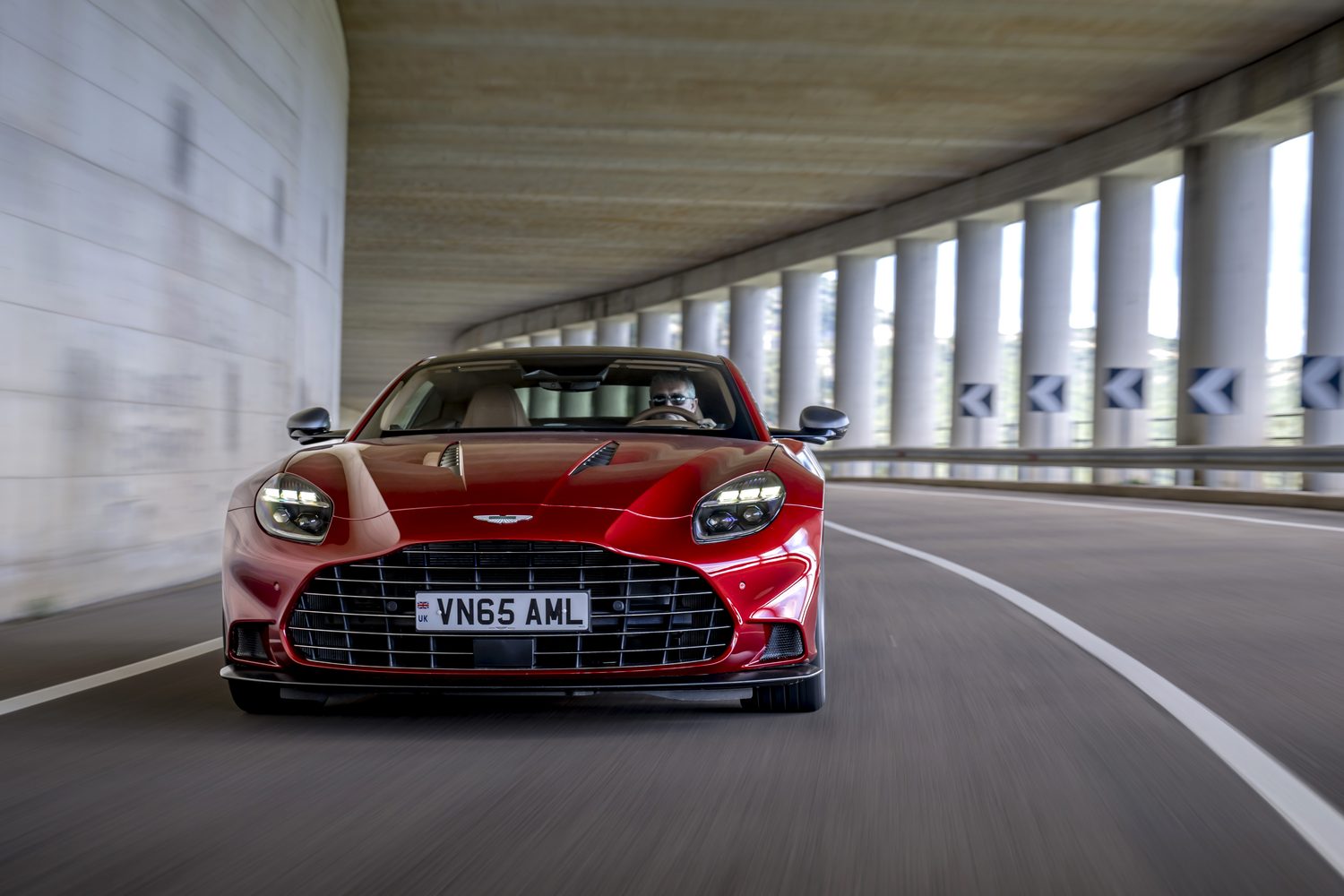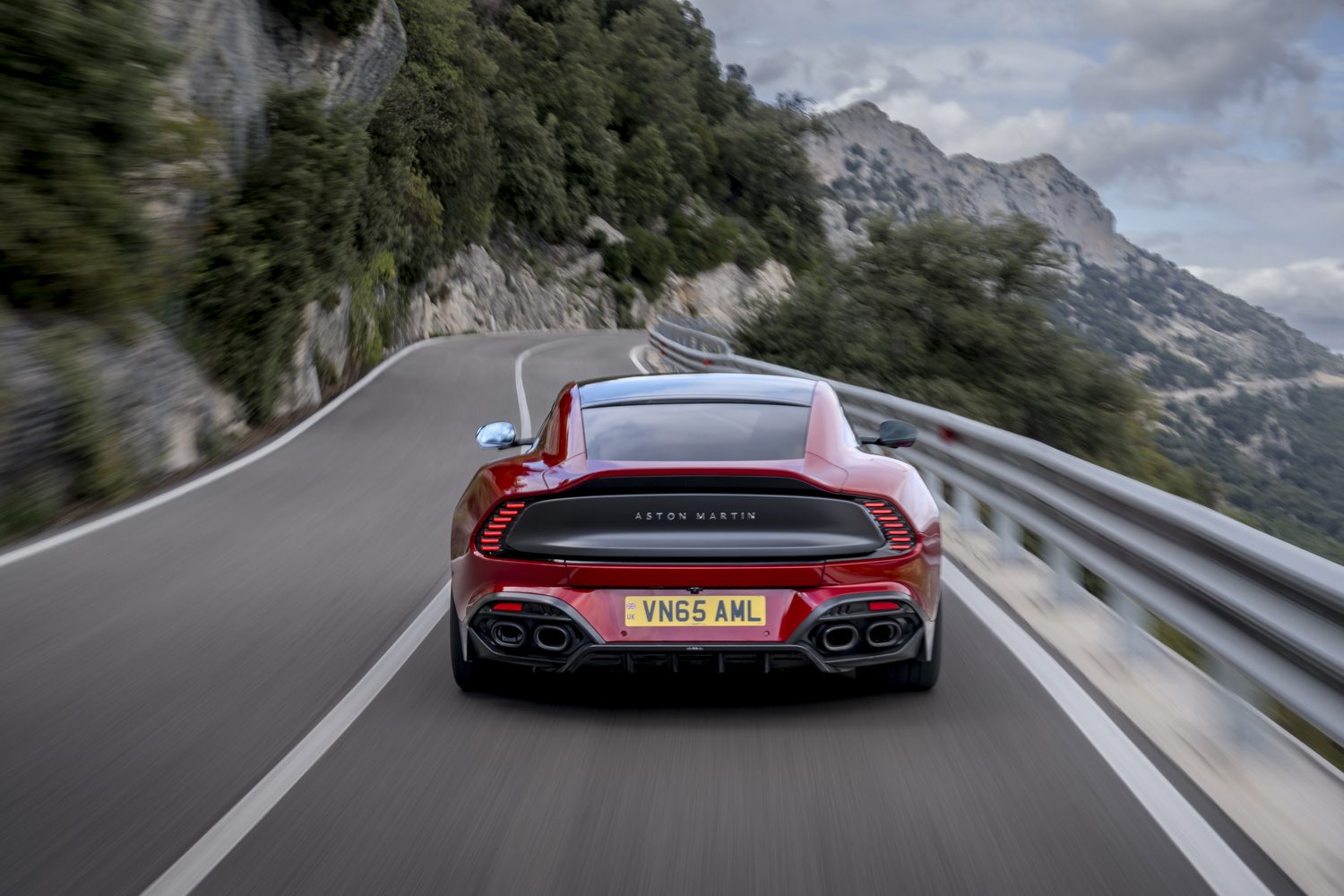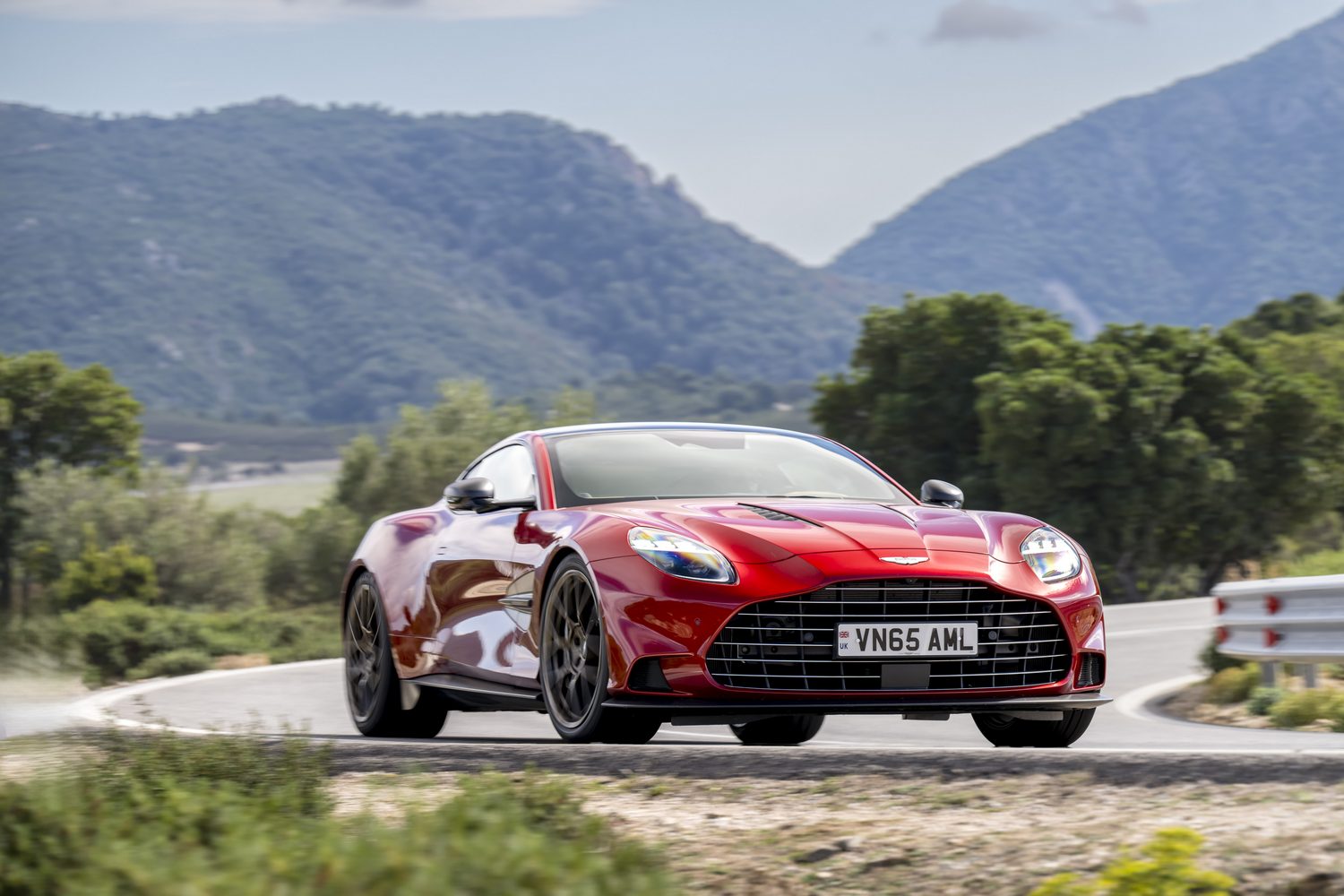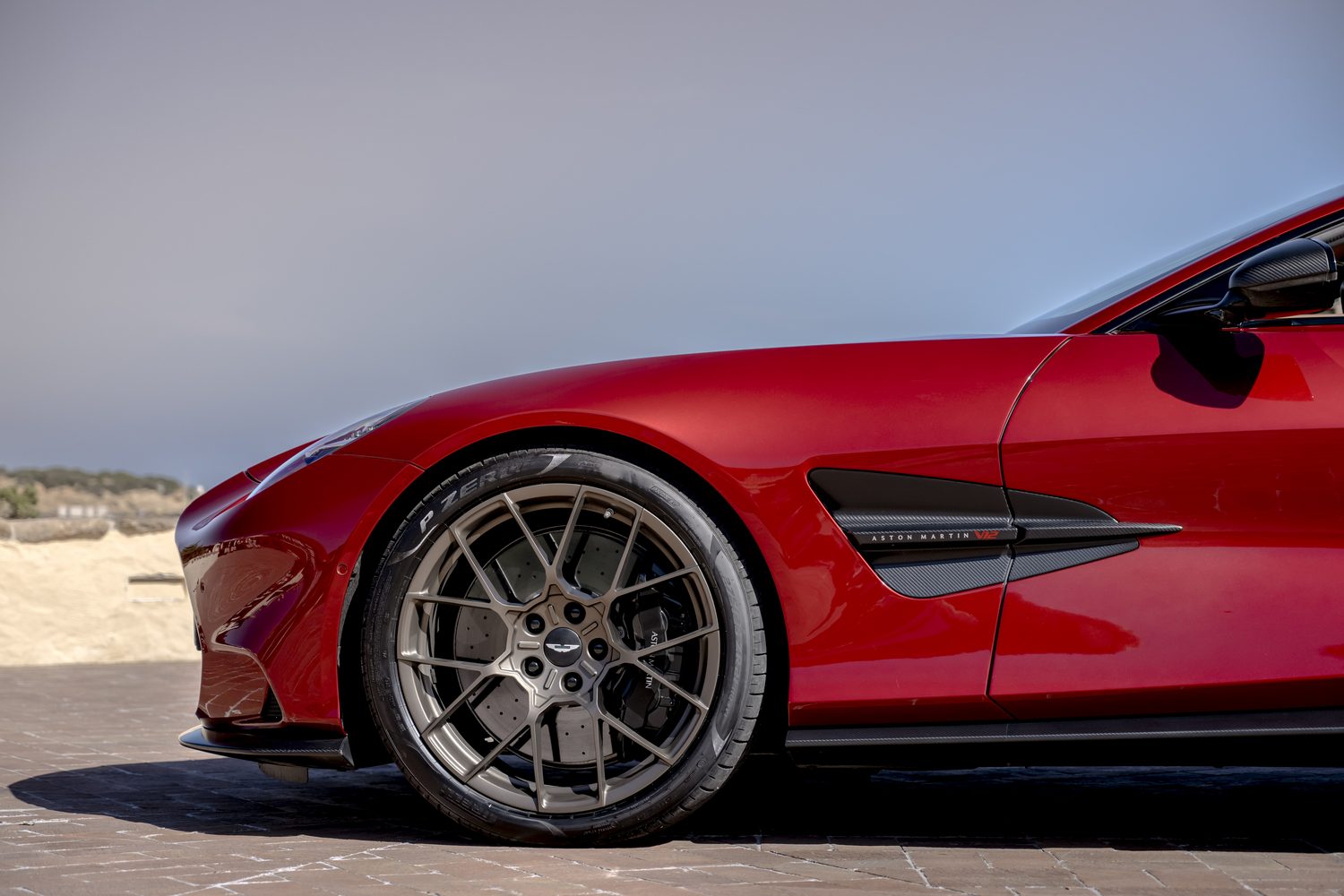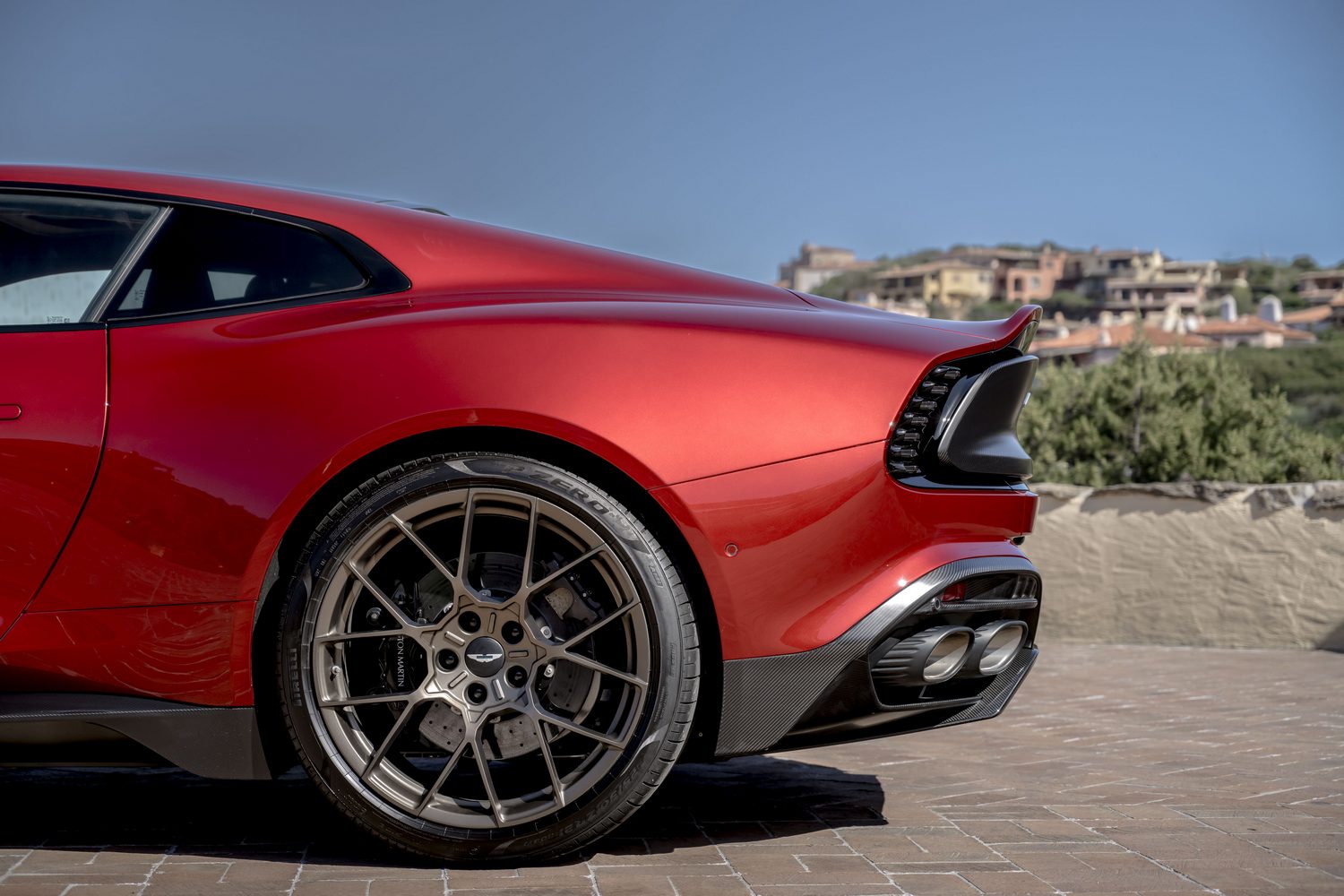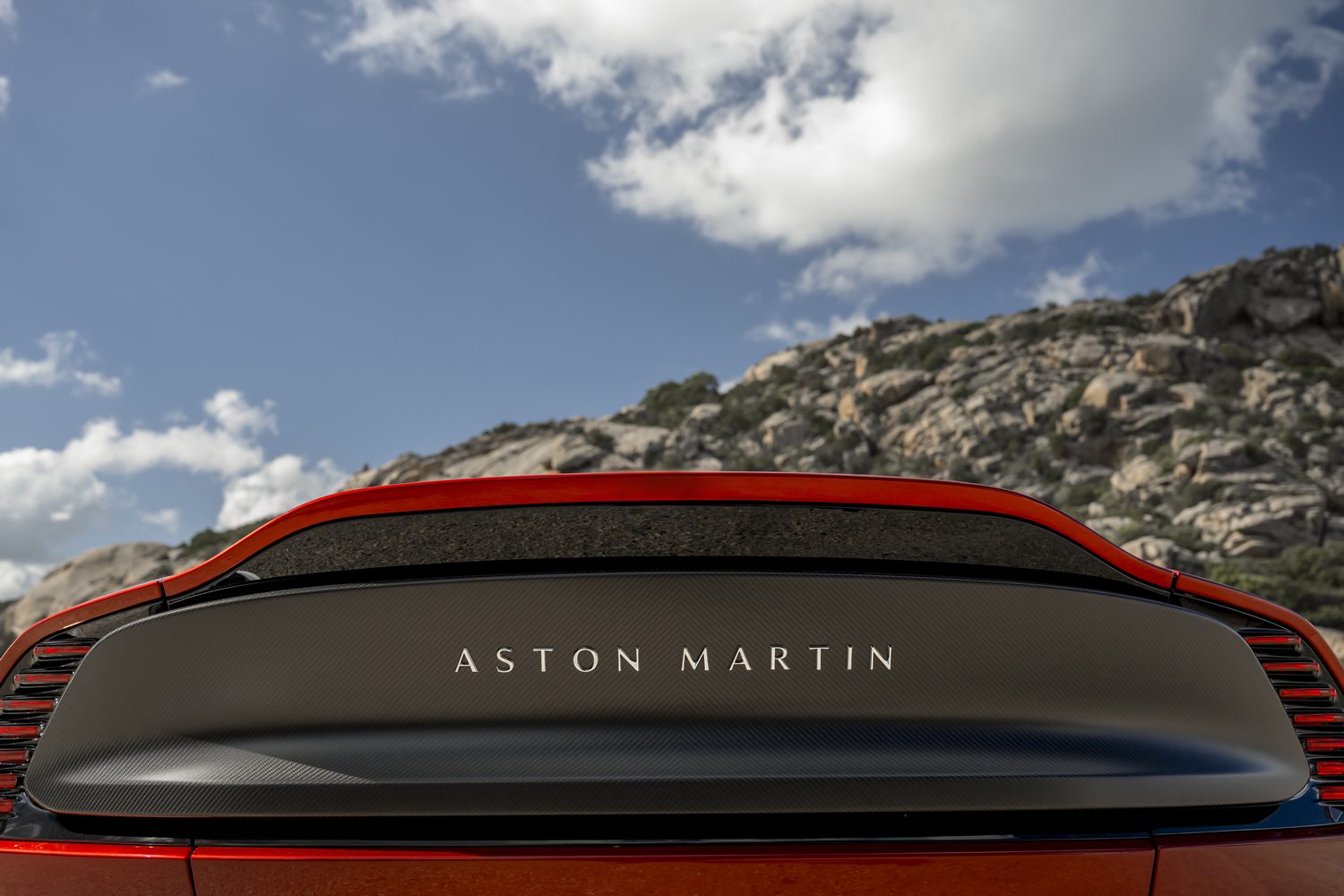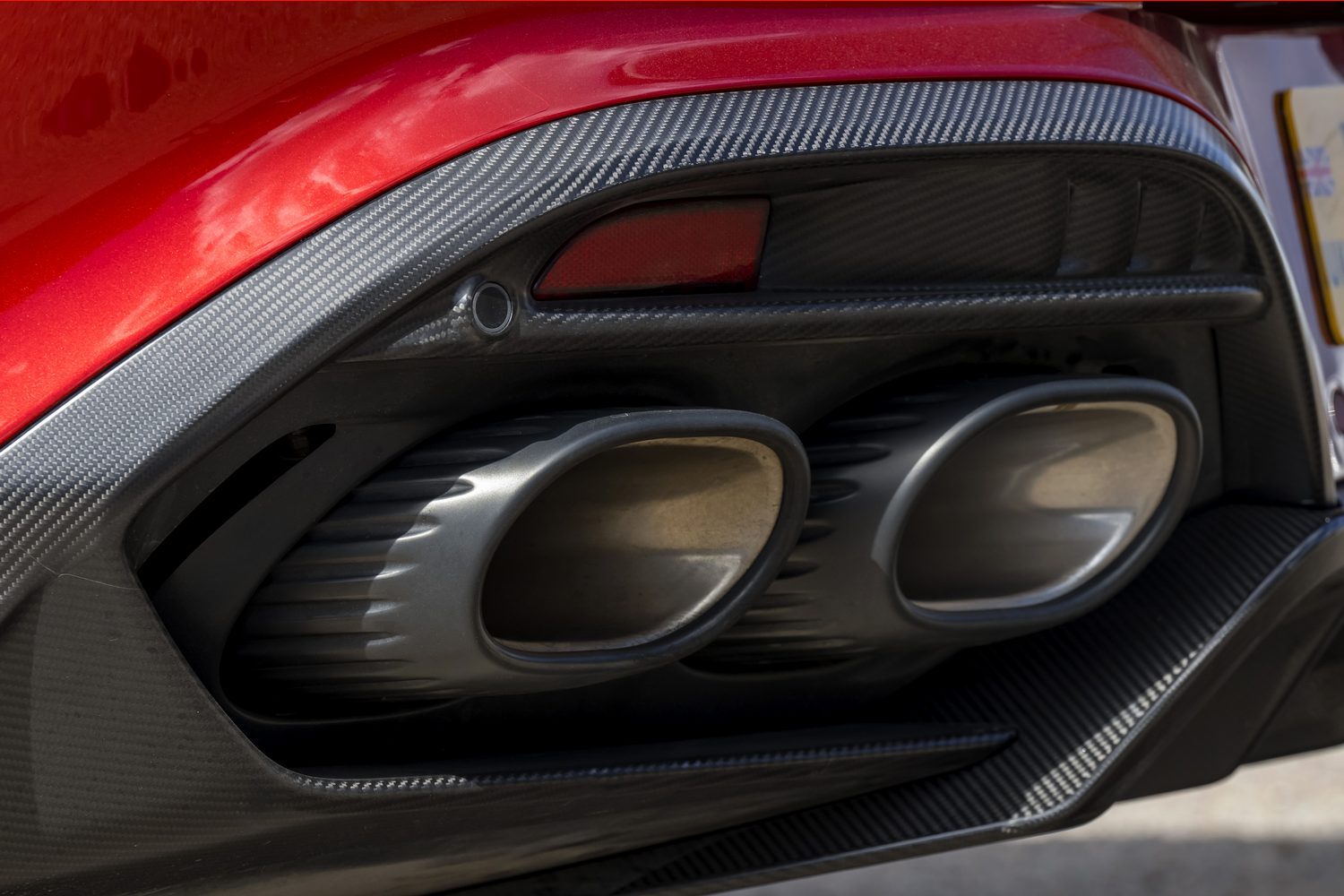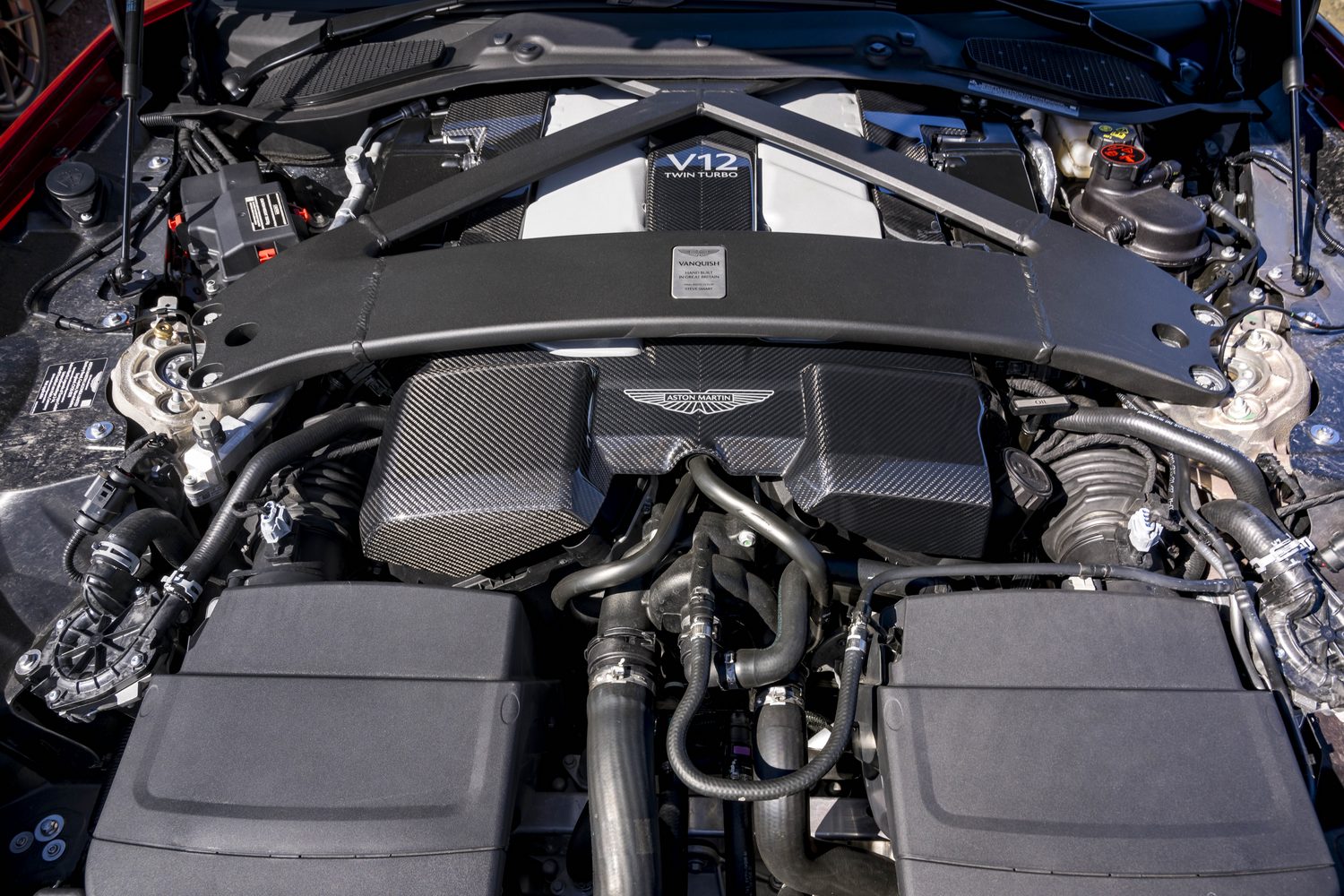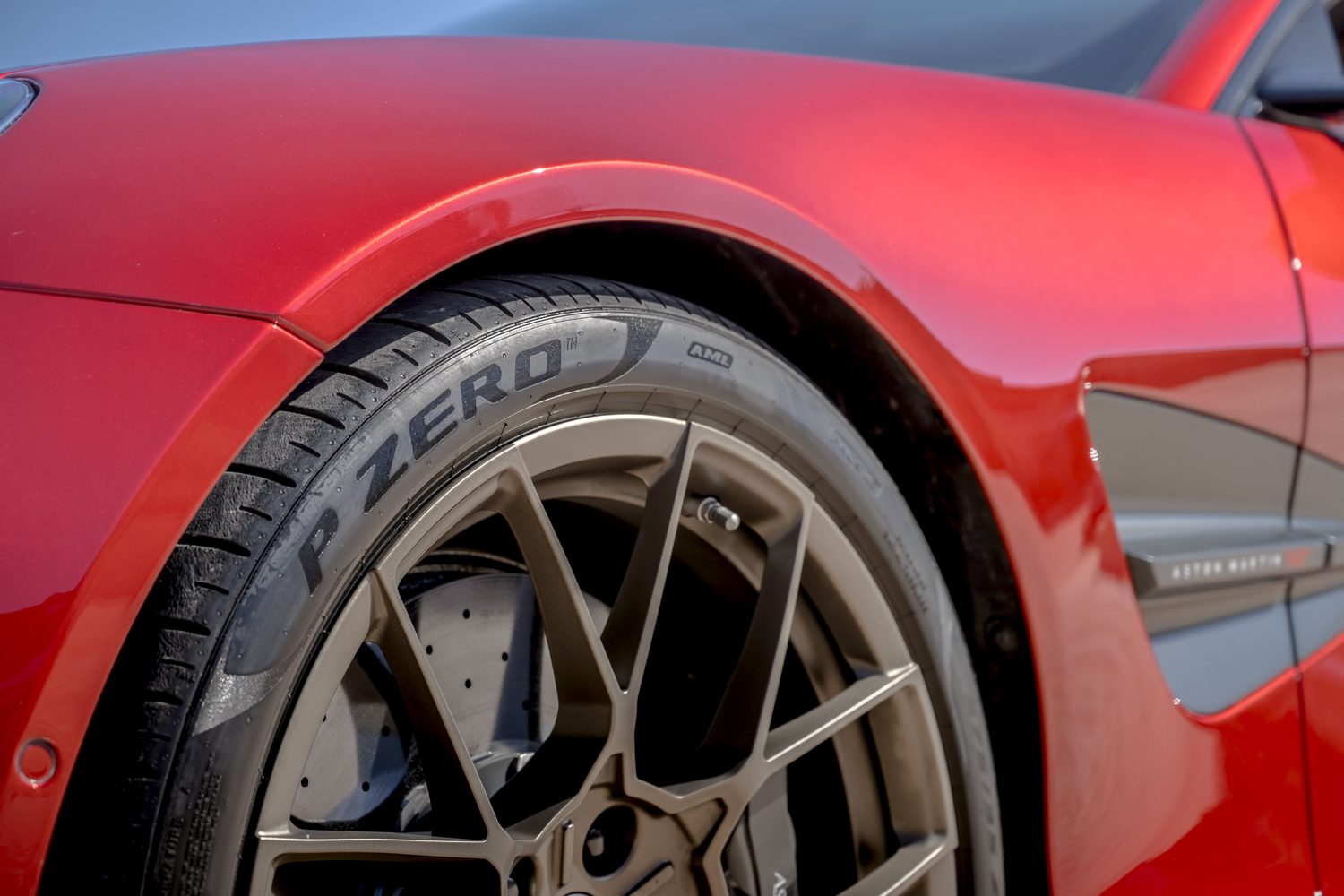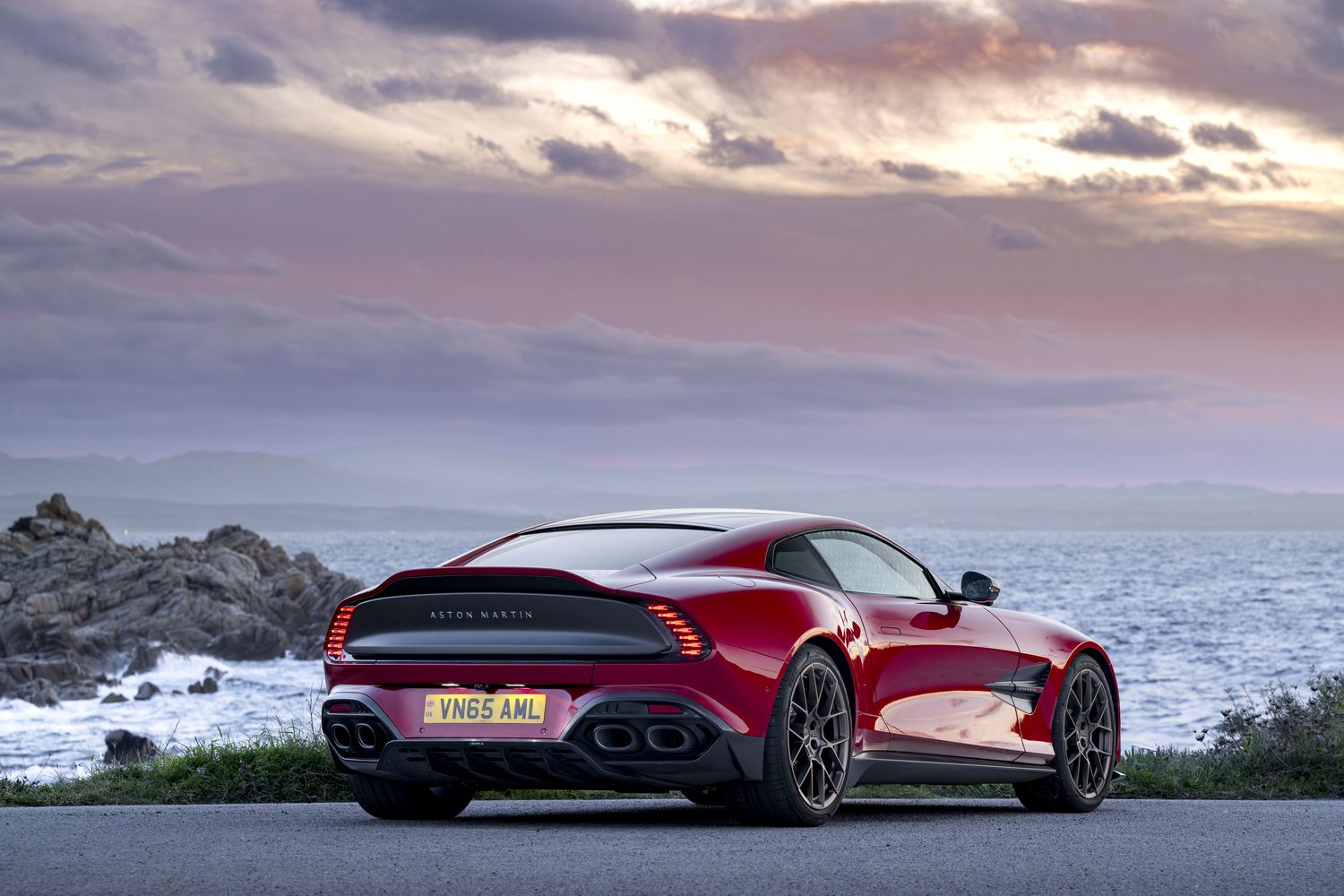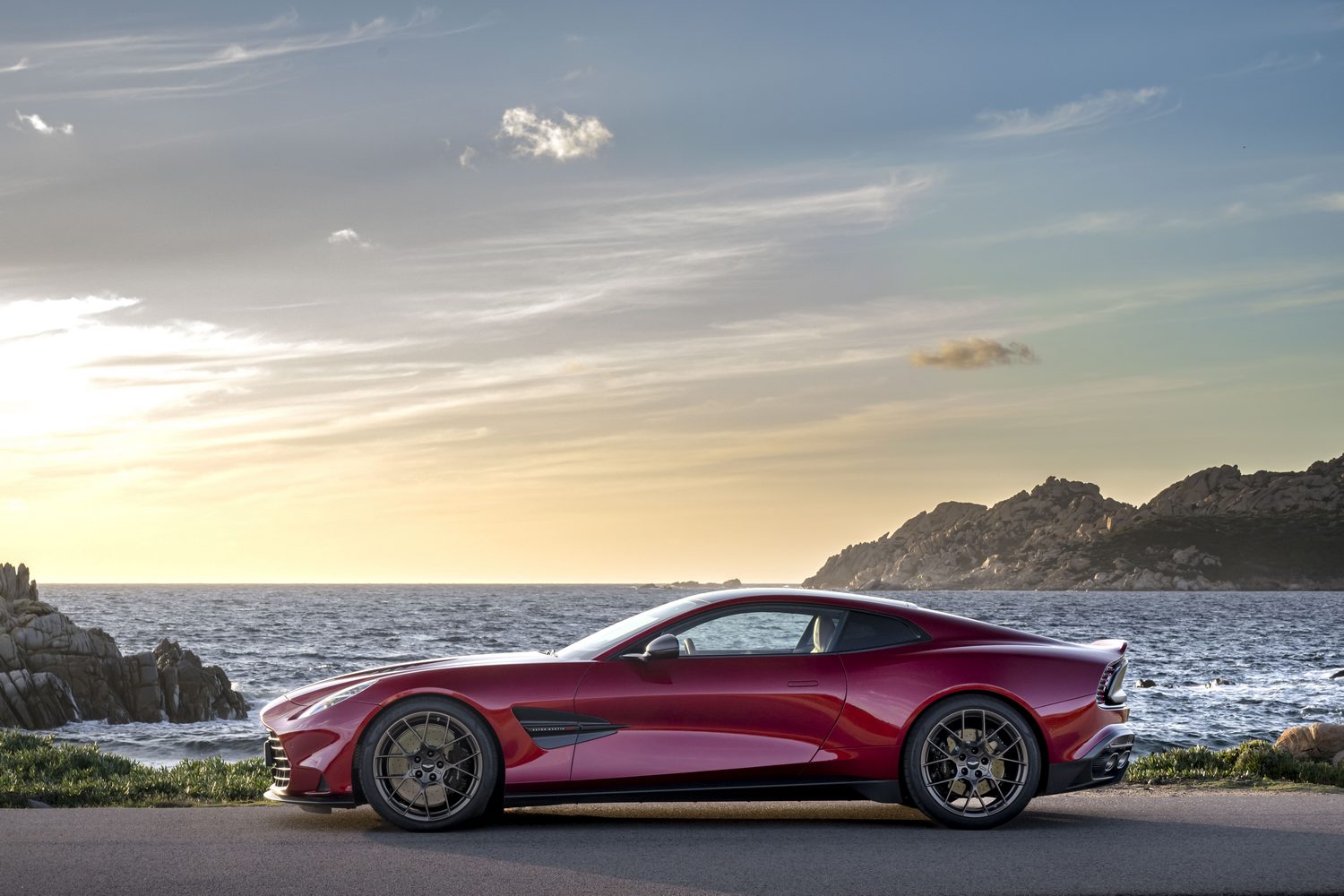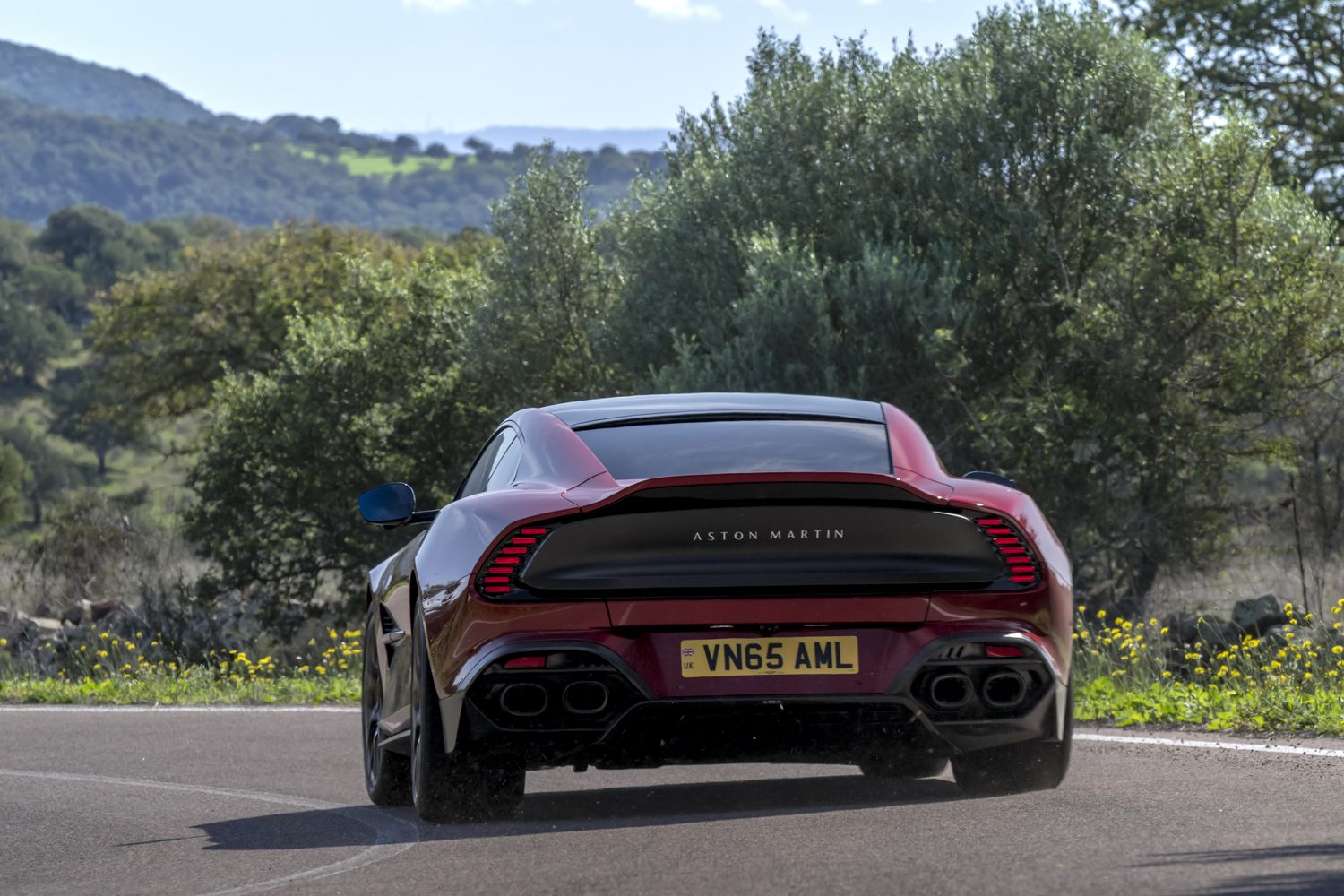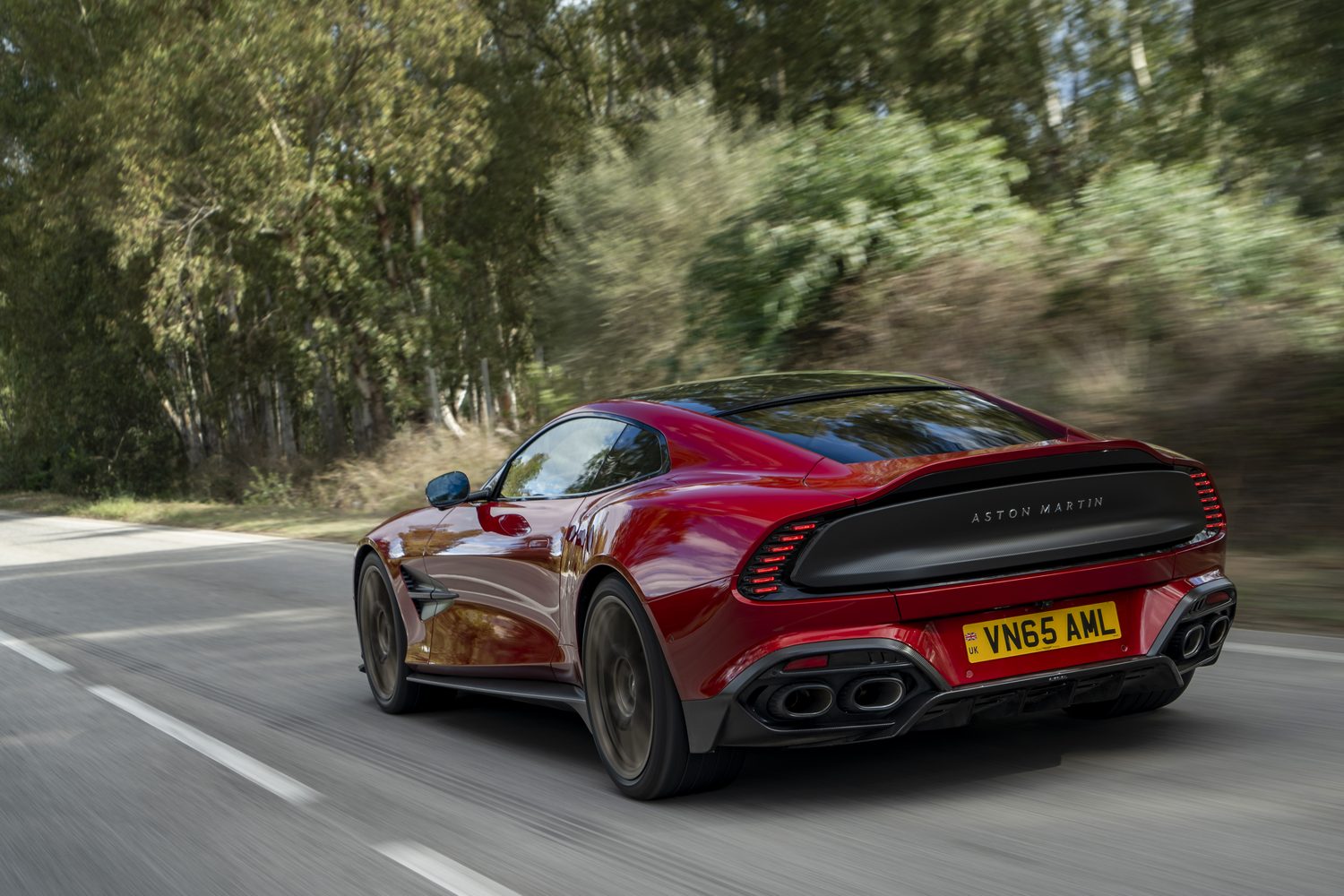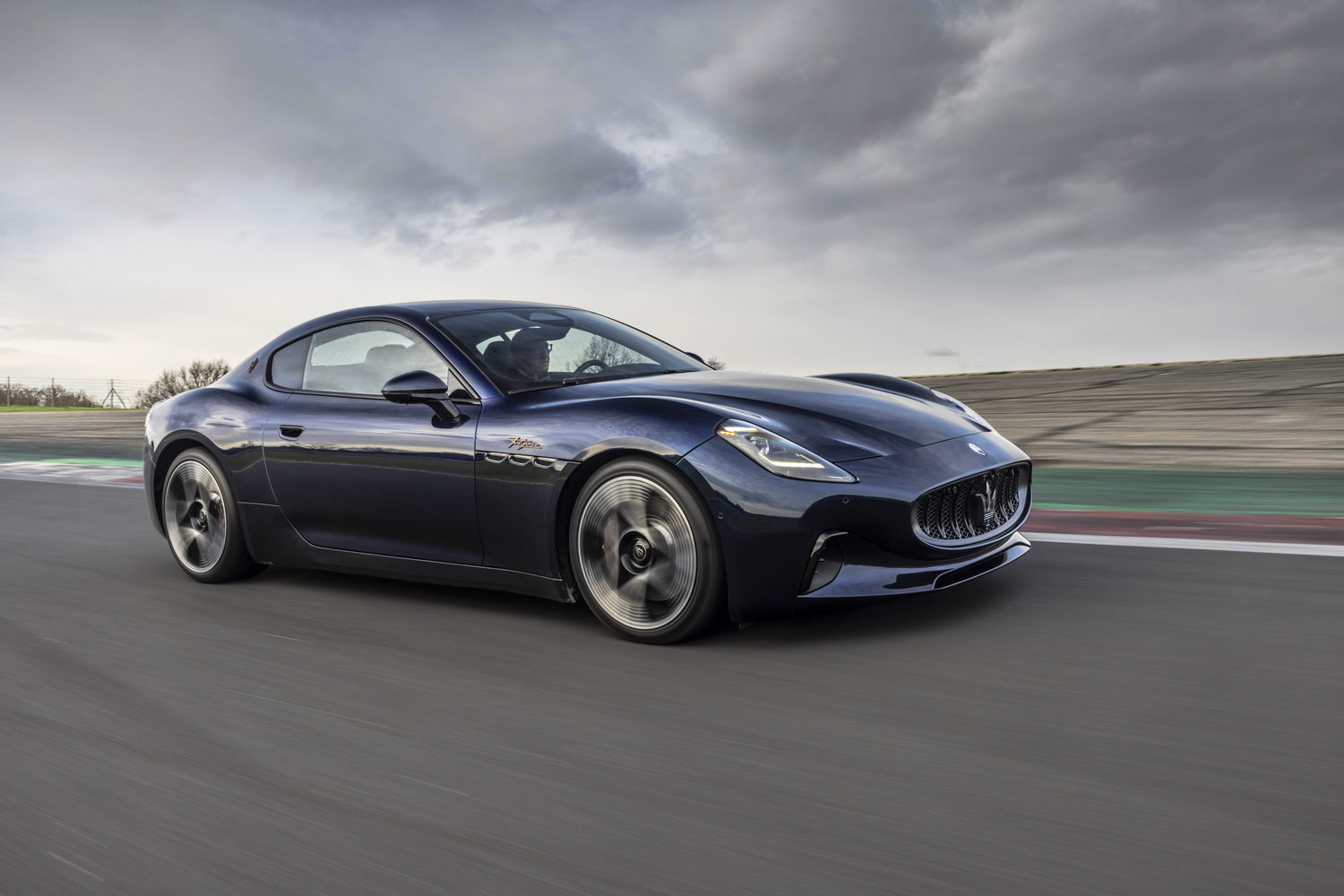Despite the fact it is only 23 years old, the ‘Vanquish’ nameplate is a legendary one for Aston Martin and so the company only uses it sparingly. Therefore, any fresh version is big news, and that’s exactly what we’ve got with the third-generation take on the Vanquish formula.
It’s powered by an almighty V12 petrol engine, and lays claim to being Aston’s fastest-ever road car, but the aim is that it should feel like a lot more than a ‘mere’ DB12 with the wick turned up to 11. So is the new Vanquish an all-conquering hit, or something of a misnomer?
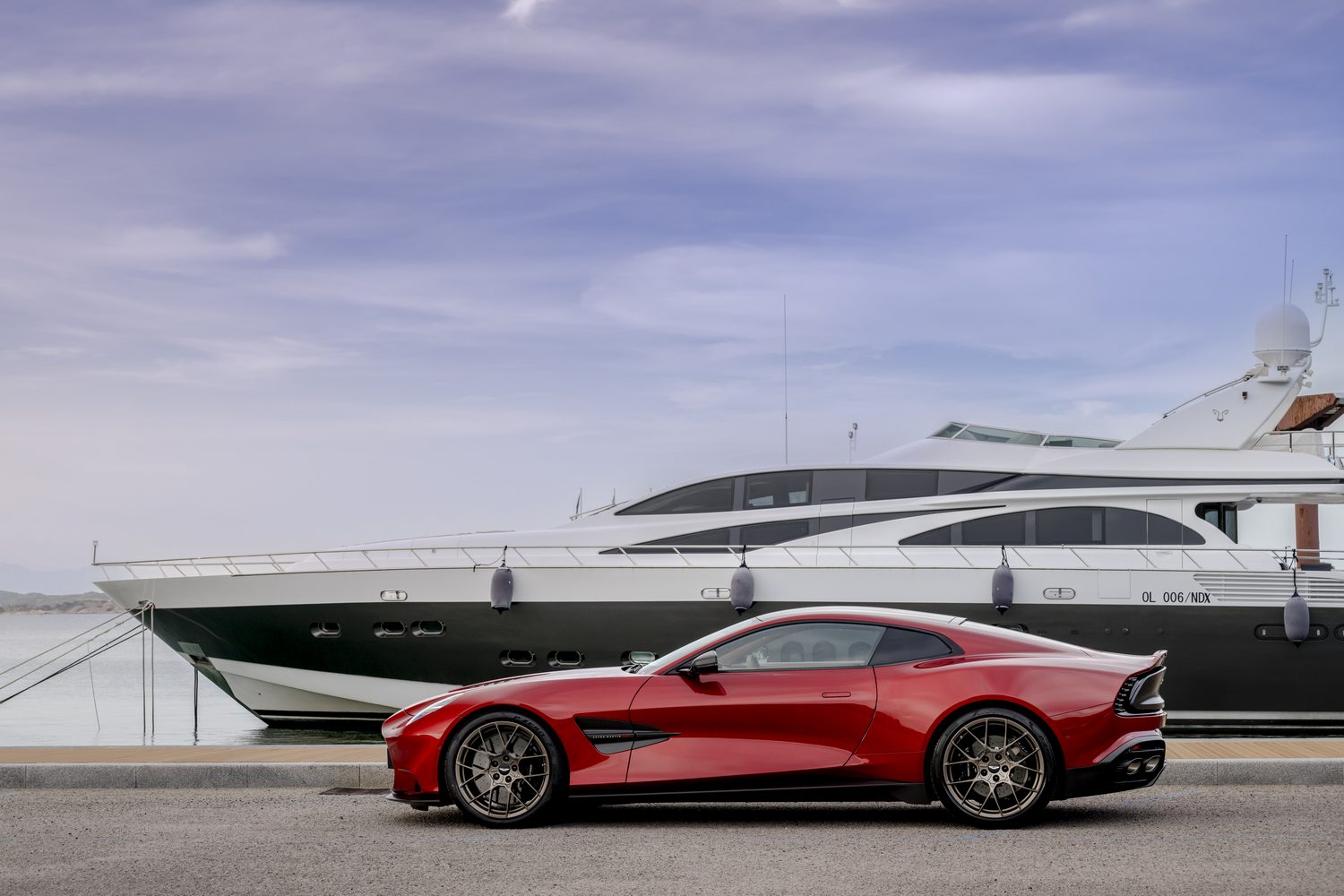
What’s does the outside of the Aston Martin Vanquish look like?
The Vanquish sits on the same bonded-aluminium chassis structure as both the Aston Margin Vantage and DB12, but it is different for the Vanquish because it has been stretched by 80mm in the area between the base of the windscreen and the front axle. This gives it a huge amount of presence, because it’s big and long and wide and low and full of swooping, flowing lines with a visual musculature to them.
Other details that are specific to this front-engined flagship Aston are a radiator grille that’s 13 per cent bigger than the one its immediate predecessor, the DBS 770 Ultimate, in order to get more cooling air to the monster V12 engine in the engine bay, as well as that distinctive side panel with strake overlaying the doors, the 21-inch forged alloy wheels, the ‘Kamm’ tail design and then the ‘Shield’.
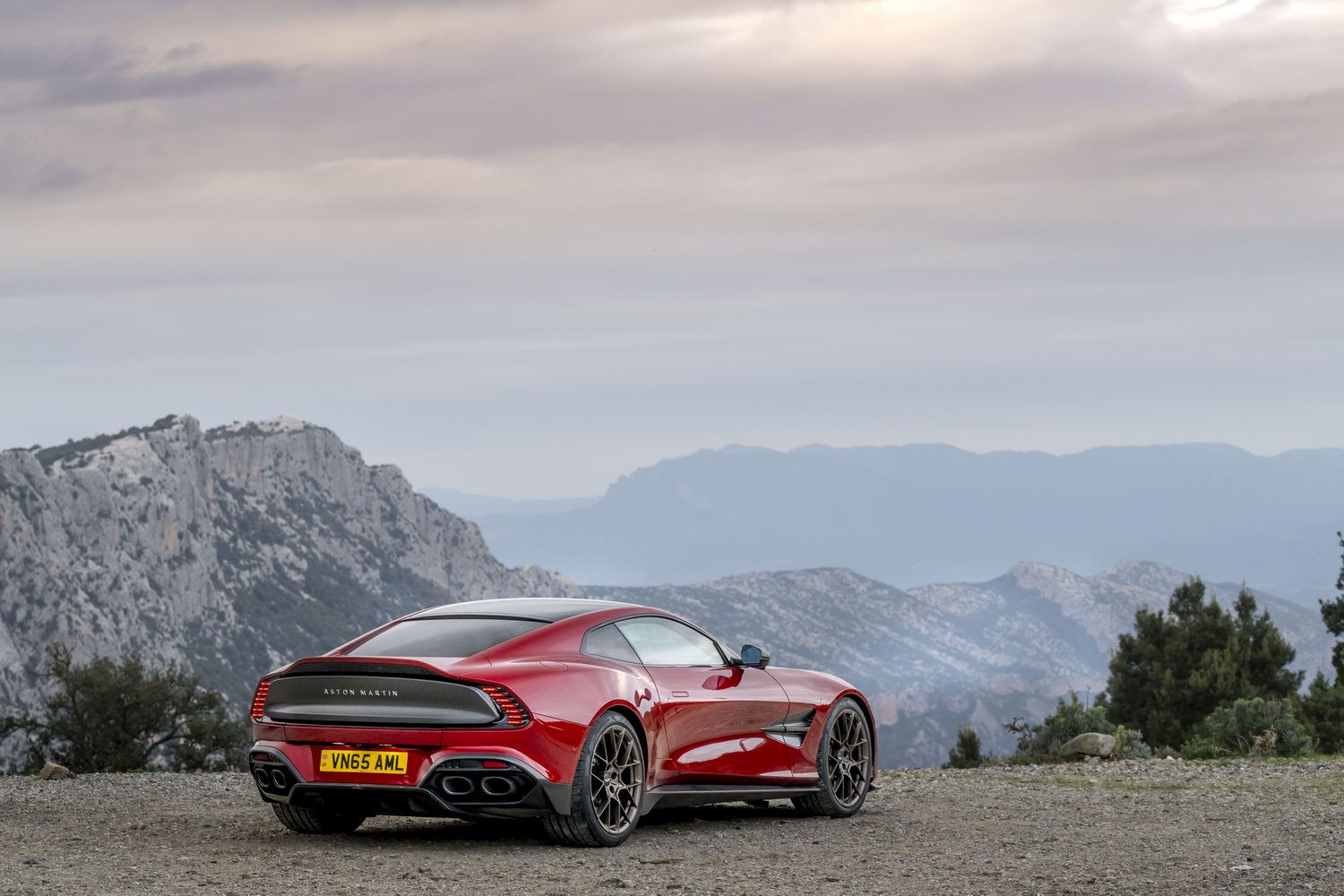
This is a panel which almost looks like it is floating at the back of the car, with the Shield framed by seven-bar LED lights which are inspired by the Aston Martin Valkyrie’s tail-lamps, and it really does help the Vanquish stand out if you’re following it on the road. There’s no way you’d mistake it for a DB12 in this instance, that’s for sure.
A look inside the Aston Martin Vanquish
It’s a difficult one to judge, this, because ostensibly there’s nothing wrong with the Vanquish’s plush cabin. It uses upmarket leather for the seats and most of the trimmings, there are nice contrasts and varieties of material finishes, and some of the haptics are truly top-notch - the paddle shifts on the car’s steering wheel, for instance, and the gorgeous rotary dial (which frames the engine start/stop button in glass) that selects modes being two fine examples. It’s also roomy, ergonomically correct and generally just a nice to be.

But is it befitting of a car that costs comfortably more than half-a-million Euro? That’s trickier to answer. It lacks for any theatre, for example, such as the rotating dashboard of a Bentley Continental GT or the wacky design work you’d get in a Lamborghini, and the layout of the Vanquish’s main fascia and transmission tunnel flirts dangerously with being accused of looking ‘plain’.
Then there’s the small matter of the lack of any rear seats - sure, 2+2 GTs don’t exactly have cavernous second-row accommodation at the best of times, but for such a big car on the outside, the unusual bulkhead behind the Vanquish’s seats doesn’t feel like the best use of space. Especially when the boot is a modest 248 litres. And it also gets hot. Very hot. Trust us, we know from the temperature of our luggage when we went to retrieve it after a fast-road drive and found it had been subjected to significant heat-soak from the Aston’s quad exhausts...
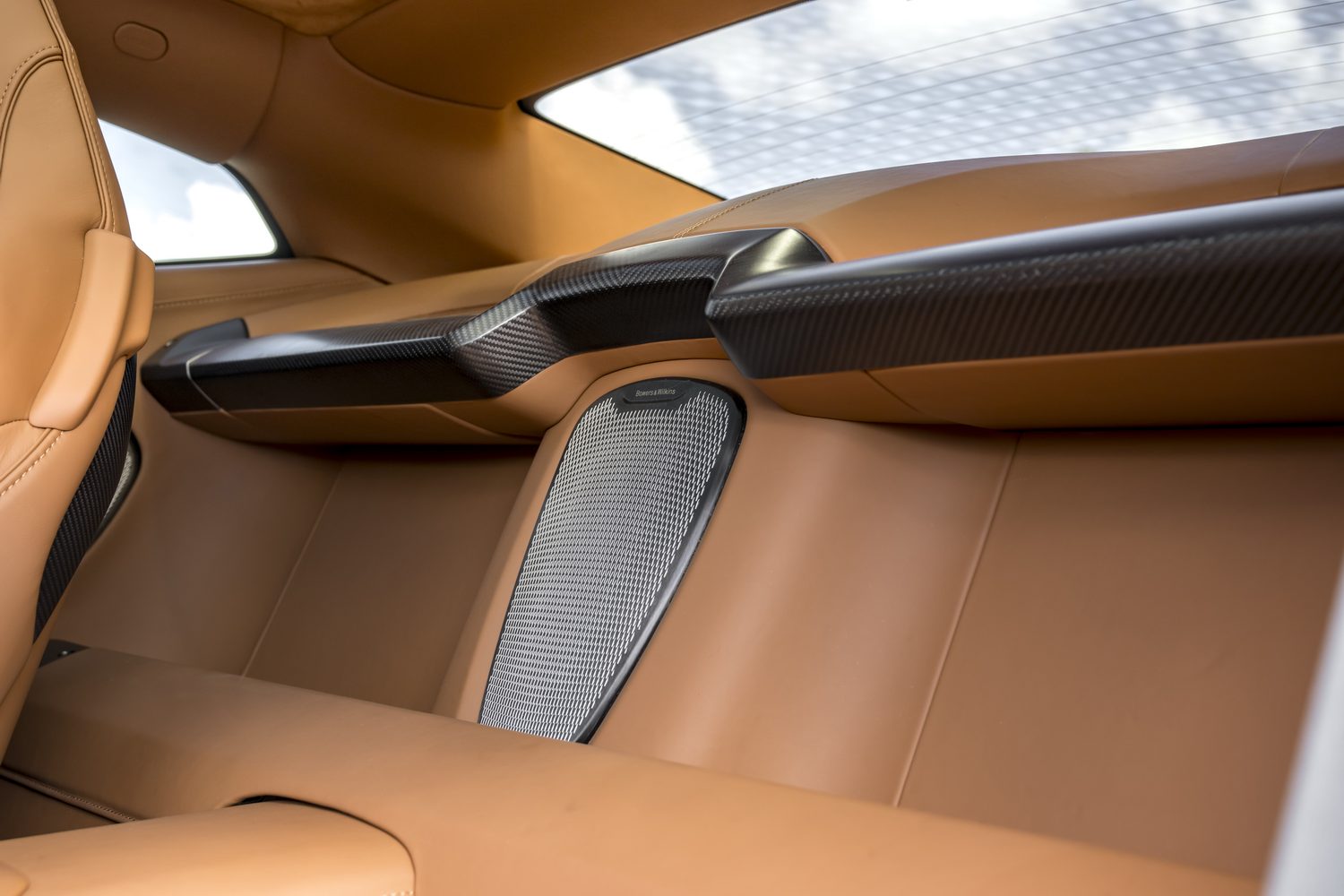
The Aston Martin Vanquish’s on-board technology
Again, we feel churlish marking the Vanquish down on this score, as Aston has made great strides recently in the quality of its in-car infotainment systems - no longer is the company using clunky old Mercedes hardware. Further, it would seem the 10.25-inch system in the Vanquish has been chosen for its discreet size, so that it won’t distract the driver from the important business of keeping such a potent vehicle shiny side up on the blacktop.
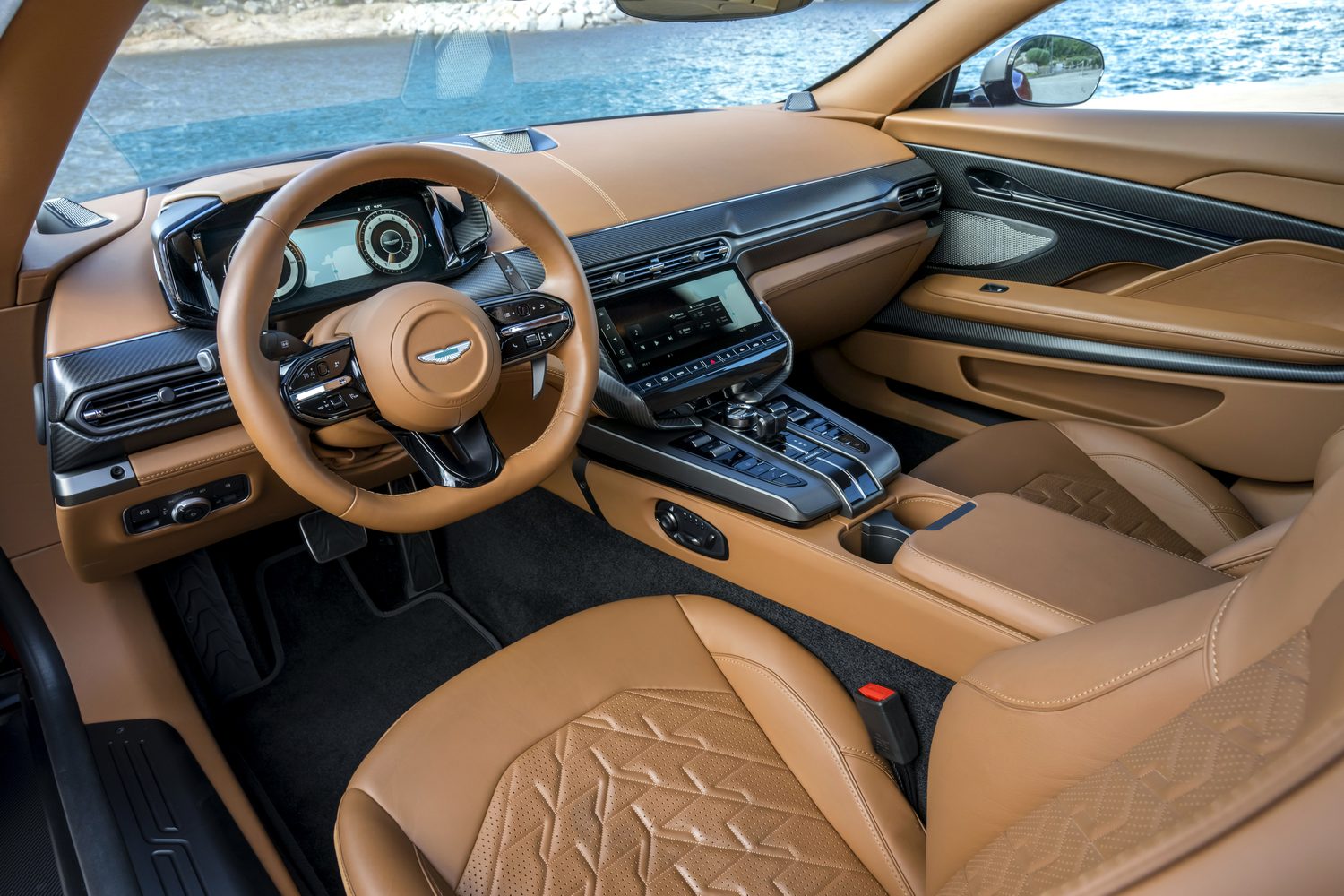
But it’s a long way from being at the cutting edge of in-car tech, either for this class or several quite a lot lower down the food chain than the Vanquish’s exalted station in life, and the same goes for the perfectly adequate yet not jaw-dropping 10.25-inch digital driver’s instrument cluster. However, the Aston makes up for that with a generous standard specification of luxuries and toys, including a 15-speaker, 1,170-watt Bowers & Wilkins surround sound system that the company actually makes a focal point of in terms of interior design - the centre speaker and tweeters are the only things which break the upper line of the dashboard, while the grilles of the speakers in the door cards are the centrepiece of the cabin styling.
Driving the Aston Martin Vanquish
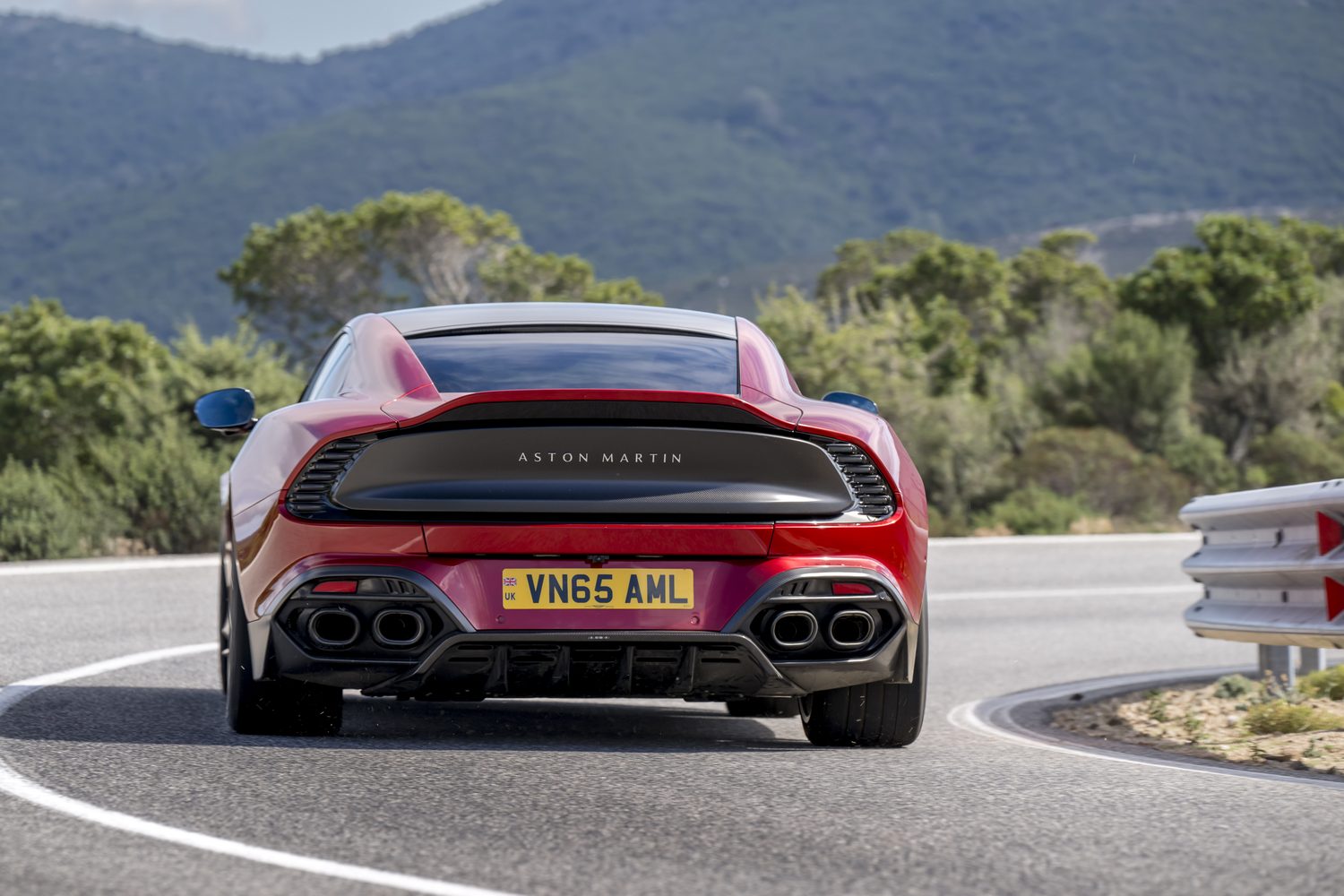
This is a car with a decidedly serious specification, starting with the engine - a twin-turbo, 5.2-litre V12. There is no hybrid assistance here and despite its identical capacity to the old DBS 770 Ultimate’s motor (brought about by the new one having the same bore and stroke), Aston insists it is otherwise an all-new engine. It delivers a thumping great 835hp along with exactly 1,000Nm of torque, which are outrageous figures even in a world of ultra-potent electric vehicles.
This V12 sends power to the Vanquish’s rear wheels only via an eight-speed automatic transaxle (which means the gearbox is mounted on the rear axle of the car, not bolted directly to the engine up front) and an electronic limited-slip differential, with a carbon-fibre shaft linking the powertrain all together. The suspension is double-wishbone front, multilink rear with Bilstein DTX adaptive dampers (first seen on the Vantage), while braking is managed by a system incorporating carbon-ceramic discs of 410mm front, 360mm rear diameter and gripped by six-piston front, four-piston rear alloy callipers.
There are then a simply huge number of three-letter initialisms in the form of electronic assist technologies, including (but not limited to) electronic brake distribution (EBD), hydraulic brake assist (HBA), positive torque control and dynamic torque vectoring (DTV), and finally 21-inch forged alloy wheels wearing bespoke-compound, high-grip Pirelli P Zero tyres of 275/35 front and 325/30 rear dimensions.
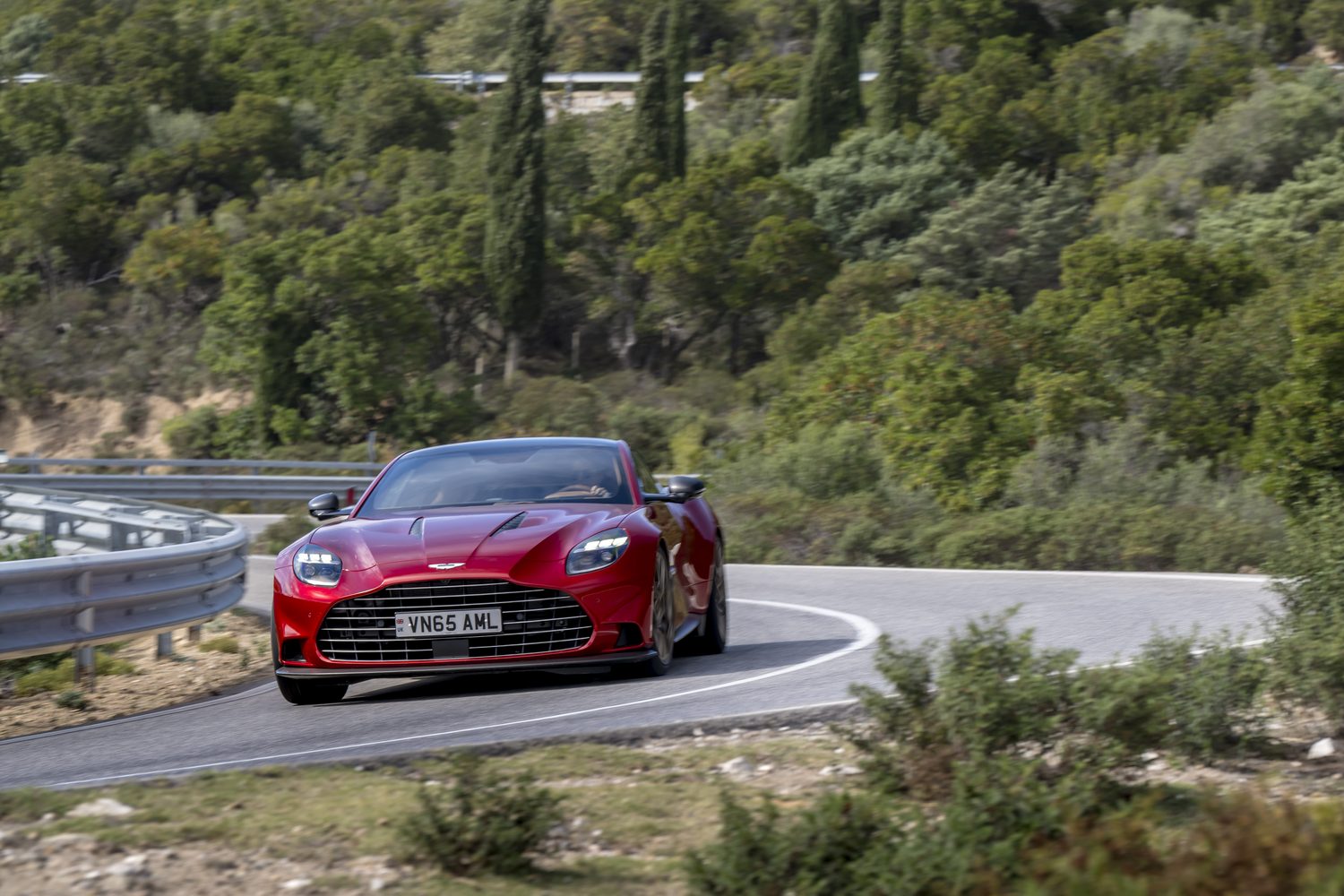
All told, this little lot - plus the leather-lined cabin and all the bodywork - comes in at a trim 1,774kg, although that is a dry weight; still, with the vital fluids and a driver onboard, we’d expect the Vanquish to still be the right side of the two-tonne mark. So, it has well over 400hp/tonne.
Which results in truly, epically, magnificently monumental performance. The Vanquish is startlingly fast, and while a 3.3-second 0-100km/h time is extraordinary in and of itself, it doesn’t in the slightest convey just how brutally powerful the Aston Martin is; that time is limited by the traction issues involved with getting 1,000Nm through the rear Pirellis effectively from a standing start.
Once it is rolling, however, the Vanquish’s acceleration is relentless. It’ll thunder to 200km/h in phenomenally short order and the true mark of the mega-quick cars - as opposed to just fast everyday stuff - is that its pick-up is every bit as capable of shoving you forcefully back in your seat if you’re moving at 100km/h and more when you deploy the throttle as if you go for it when you’re in second gear and travelling at 30km/h. Make no mistake, the Aston Martin Vanquish is a proper speed monster; treat it with respect, and caution, but love it all the more for its unrestricted power.
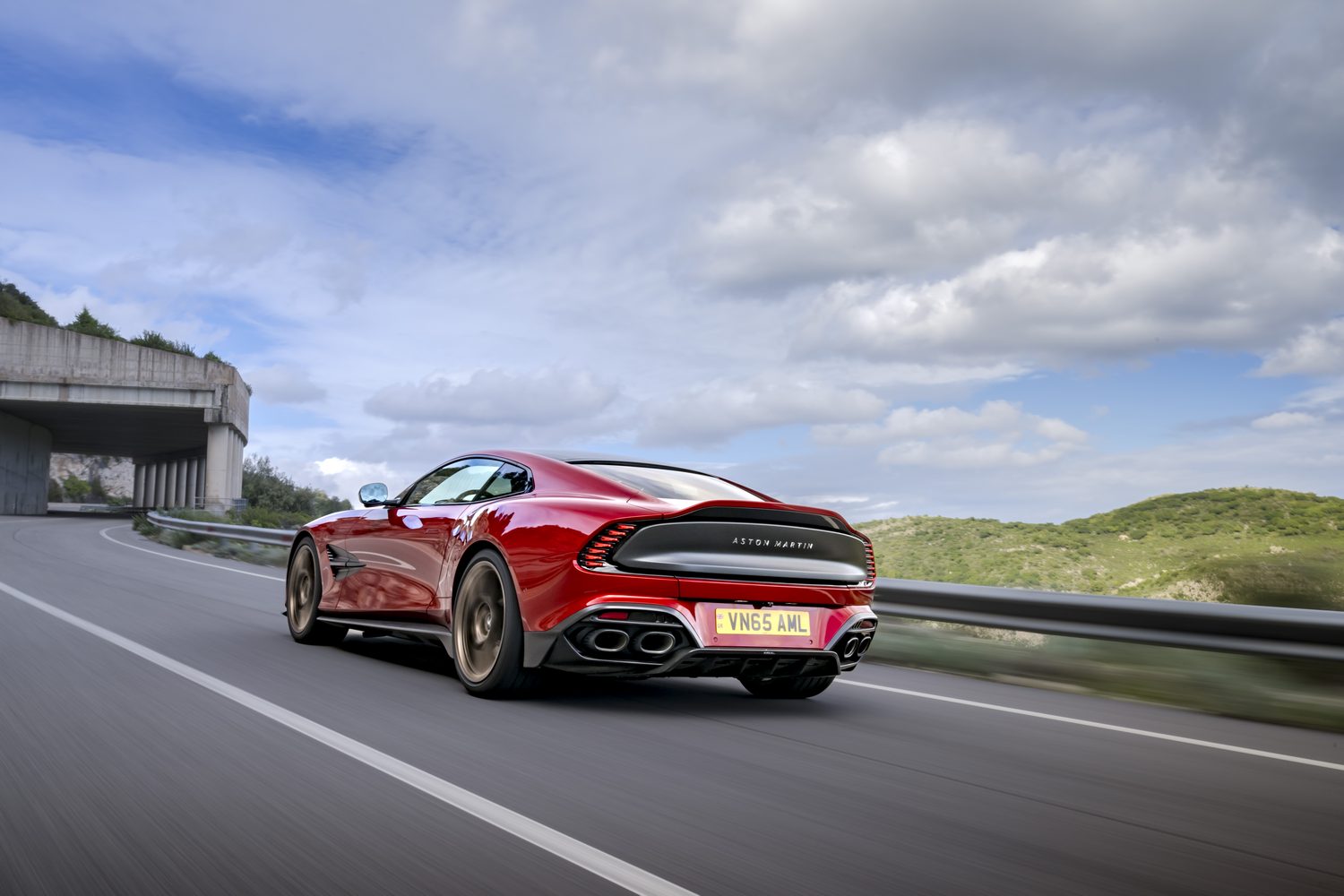
What makes this performance so special, though, is the noise. Forced-induction V12s aren’t always the most sonorous of automotive units, but the Vanquish’s 5.2 deserves to go into the very highest echelons of all-time great motoring soundtracks. It’s not so evident in GT mode, so you need to click the car into Sport or Sport Plus, whereupon the true voice of the engine is unleashed. And what a voice it is. Gravelly and brooding at low revs, snarling and rich in the midrange, and then transforming into a banshee-like, borderline motorsport howl as it homes in on the redline, the sound of the Vanquish almost serves to make it feel subjectively quicker than it actually is.
But is this just an Aston hot-rod? Something with great noises and smart looks and plenty of power, yet equipped with a chassis that feels a little off the pace or rough around the edges? No, it isn’t. In fact, it’s easily the best Aston Martin we’ve driven for handling dynamics yet. Again, in GT mode, the steering is rather light and feel-free, but as soon as you’ve dialled the car into Sport or Sport Plus, the helm weights up beautifully and provides wonderful, measured responses - the Vanquish is a car with a mega front end that’ll key into a corner smartly and immediately if you want it to, but the ratio of the system is such that the Aston never comes across as flighty or skittish.
And the control of body and wheel movements is exemplary. Genuinely breathtaking. For a big, long-wheelbase car, the Vanquish is no bruiser in the corners, instead display an agility and adjustability that is simply sensational. What’s so magical about it is that, for something with 835hp and a 345km/h top speed, it’s in no way intimidating. Even drivers of only average talent can lean on the chassis - and the throttle - through corners, and there’s ample opportunity to adjust the cornering line with your right foot alone.
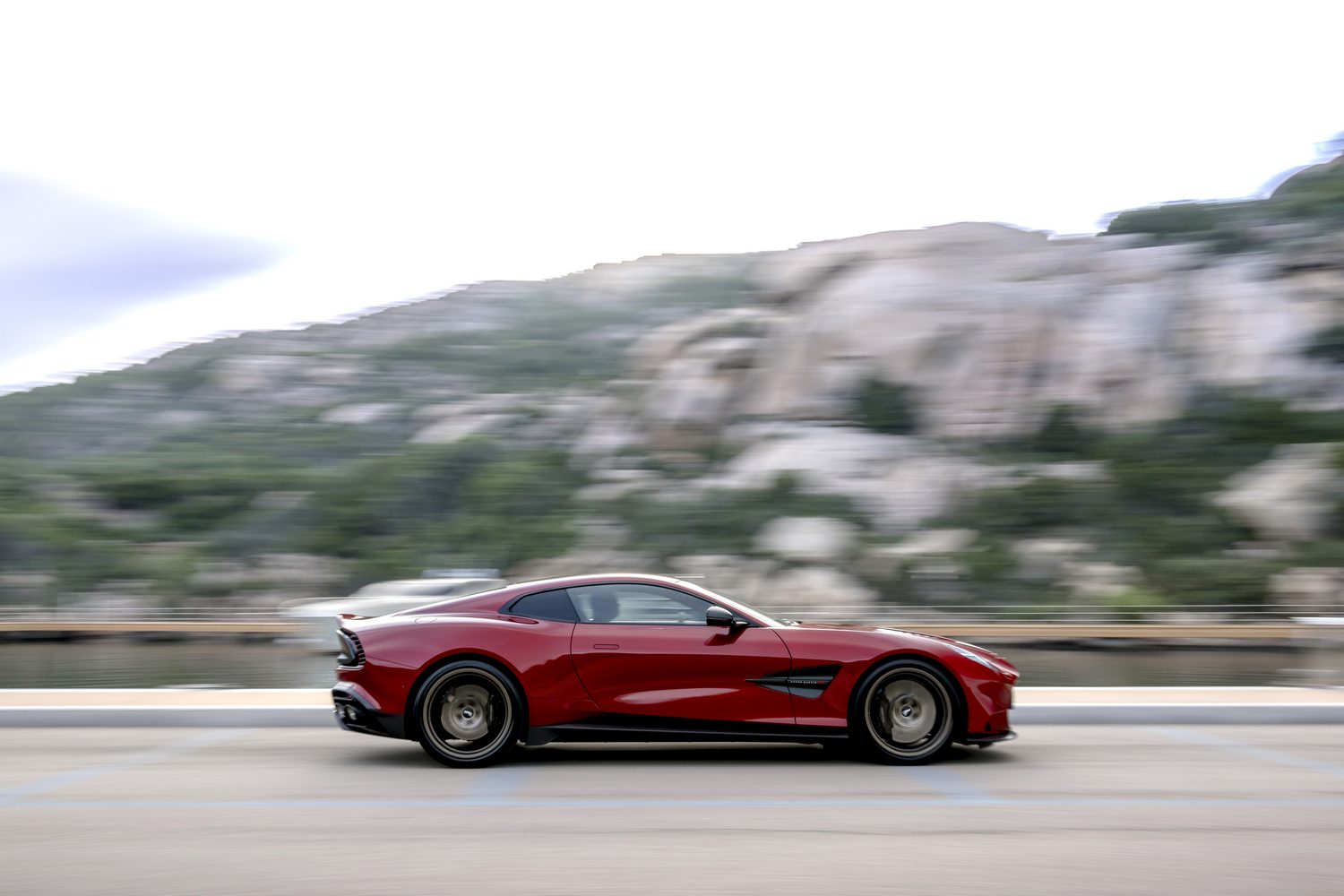
True, there’s a slight sensation from the torque-vectoring rear axle, which subtly squirms and squats under full throttle loads in dry conditions, that you wouldn’t want to provoke it in wet or slippery weather, sure. But in warmer climes, the grip the Vanquish has on the road is nigh-on unimpeachable and it feels like it has traction for days - almost four-wheel-drive-like, without any of the fun-sapping understeer such a system would bestow on the car.
Where it doesn’t quite excel is as a grand tourer. The Vanquish is definitely a car which leans more towards the ‘sporty’ side of its character than the ‘luxury cruiser’ aspect, a fact most evident in the GT mode that soon proves itself to be superfluous to requirements. The ride is neither supple enough nor controlled enough in this mode to make operating the Vanquish in it worthwhile, and there are times where transverse ridges and expansion joints on bridges (admittedly quite meaty ones) can send a loud bang through the Aston’s superstructure.
It also feels a bit fidgety at town speeds in the GT setting, while the 325-section rear tyres generate a fair amount of noise on rougher road surfaces. Weirdly enough, although the ride remains firm-edged, the Vanquish actually feels better around town in Sport mode, where it seems to have a better grasp of its wheels and shell. So, it’s a shame the Aston doesn’t default to this setting, although this is a minor bit of hair-splitting.
The reasons you’d buy an Aston Martin Vanquish
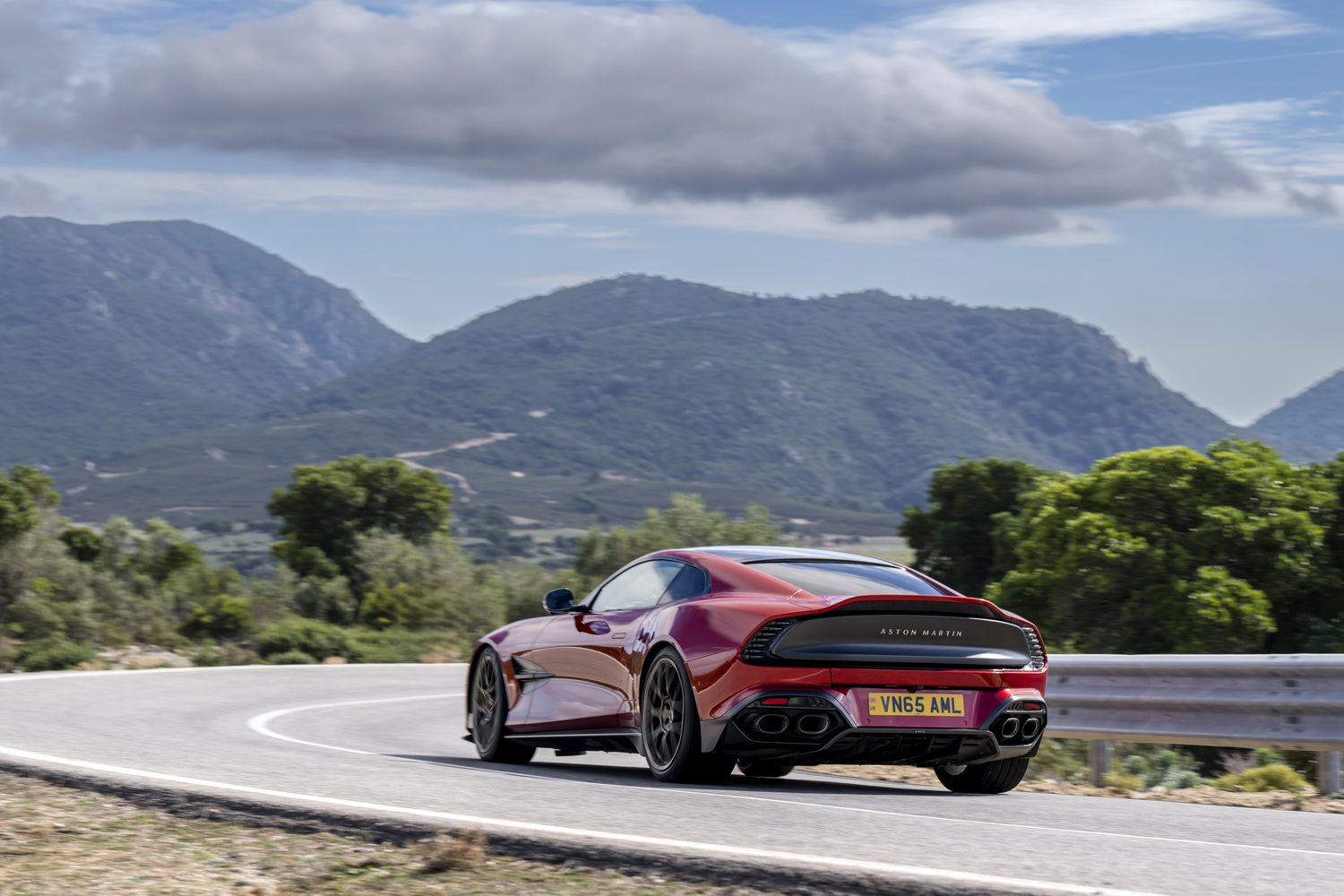
The new Vanquish is a car with many of the long-held Aston Martin traditions - such as immense desirability, exquisite bodywork and a thumping great petrol engine with loads of power - only now it has a chassis of glittering talent to go with it. Few exotic cars at this end of the market can offer a driving experience as thrilling or as involving as the Aston Vanquish, and while the car has a few flaws, it’s otherwise everything you’d want a dream car like this to be. The Vanquish is a thoroughly marvellous piece of work and our favourite Aston Martin yet.
Ask us anything about the Aston Martin Vanquish
If there’s anything about the Aston Martin Vanquish we’ve not covered, or you’d like advice in choosing between it and other cars, you can avail of our (completely free) expert advice service via the Ask Us Anything page.

